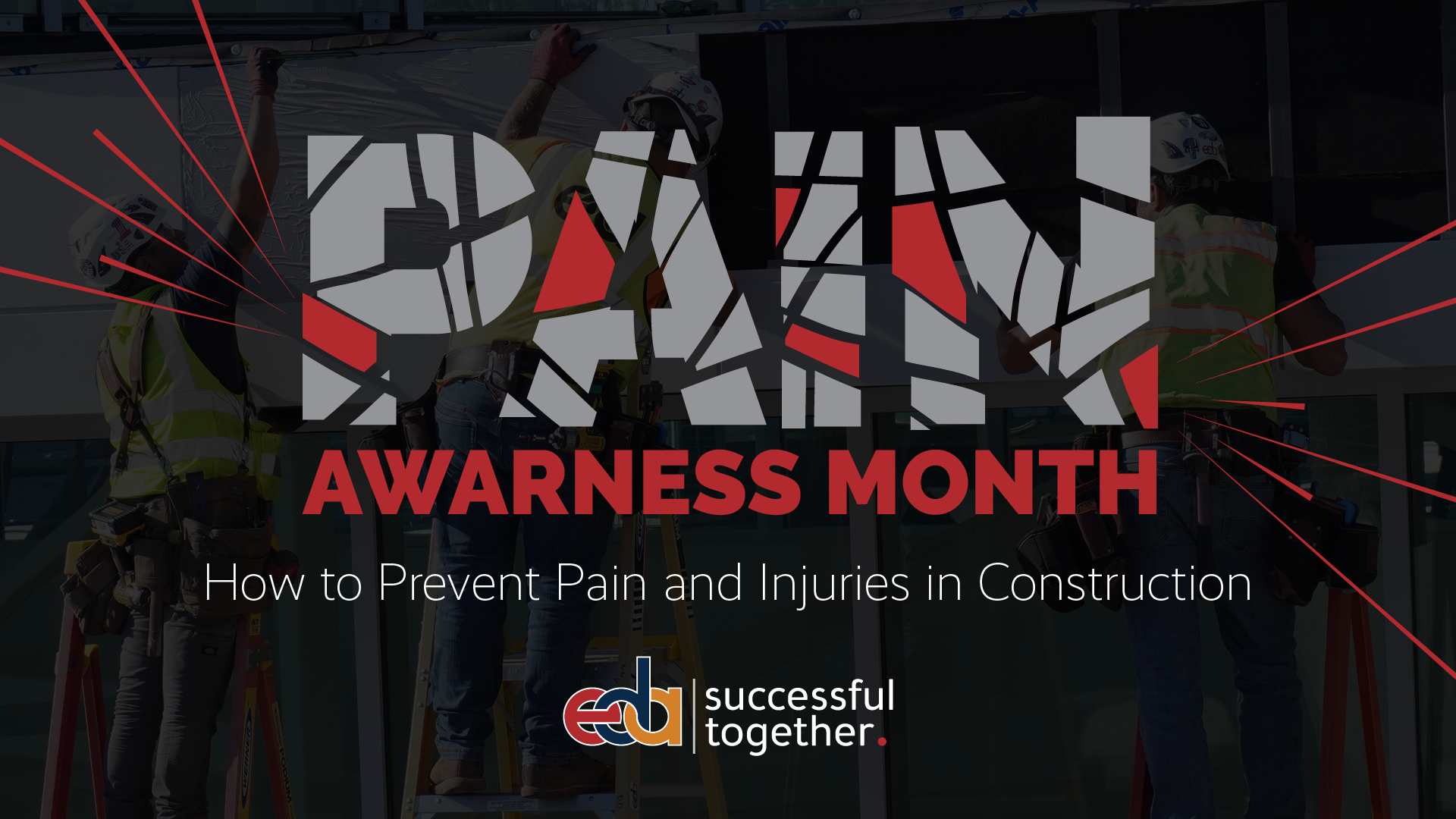September is Pain Awareness Month, a time dedicated to raising awareness around pain and pain management. This month is especially relevant to the construction industry as workers engage in physical labor daily. Construction workers are at increased risk of injury or chronic pain due to heavy lifting, repetitive movements, and job site hazards. These factors can contribute to musculoskeletal disorders (MSDs), which are common among construction workers. These disorders may lead to pain, loss of function and mobility, and long-term disability if not addressed early. To do our part in raising awareness about pain management and prevention, we have compiled a list of preventative measures to limit the impact of the grueling everyday tasks of construction.
Proactive Measures to Prevent Pain
Ergonomic Work Practices
Ergonomics is the practice of designing, modifying, and improving a workspace to fit the worker, with the goal of reducing the risk of injury and discomfort while improving productivity. Encourage workers to use proper lifting techniques and equipment and provide frequent breaks to prevent the strain being placed on the body.
Proper Equipment and Tools
An underrated aspect of preventing pain in construction is the tools and equipment being used. Ergonomic tools should be utilized to reduce strain, such as those with cushions and are adjustable to fit various body types. Mechanical aids like hoists, cranes, and dollies should be utilized to reduce the load on laborers when moving heavy materials. Even tools that minimize vibrations can go a long way.
Stretching
Stretching is a simple prevention method to pain. Stretching helps to elongate the muscles, resulting in improved flexibility, increased blood flow, and relief of tension, improving overall muscle health reducing the likelihood of injury. Implement daily stretching routines before, during, and after shifts to reduce discomfort and pain.
Safety Training
Training and education should be provided to employees that identifies how to prevent injuries. Conduct regular safety training that includes proper handling of equipment and hazard recognition. Education on body mechanics and the early signs on MSDs can help get ahead of chronic injuries and empower employees to be proactive.
Personal Protective Equipment (PPE)
Personal protective equipment is very important in reducing hazards in the workplace and the risk of injury. While hard hats and safety glasses are the most recognized forms of protective gear in construction, other equipment like knee pads, gloves, and back supports play a crucial role in safeguarding areas prone to musculoskeletal disorders (MSDs).
Supportive Work Environment
Create a workplace culture that is supportive of pain and chronic injuries. You want employees to feel comfortable reporting pain and discomfort without fear of repercussions. By creating a supportive environment where workers are comfortable disclosing their discomfort rather than toughing it out, early intervention can prevent minor issues from turning into chronic pain.
The Importance of Early Prevention
Early intervention is key in preventing acute pain from turning into a chronic condition. Chronic pain can negatively affect a person’s physical ability not only in their career but also personal life. It can lead to serious disabilities that limit their ability to perform certain movements and participate in activities. Addressing these issues promptly can prevent long-term deterioration of the body and ensure your staff is healthy and productive.
Conclusion
Pain Awareness Month is an opportunity for construction companies to reassess their safety practices and attitude toward injury prevention. By prioritizing these prevention strategies, companies can create a safer, healthier work environment that not only prevents pain but also enhances overall productivity. Be sure you are providing the proper training, equipment, and support for your staff to ensure their utmost well-being. Prioritizing pain prevention today leads to a healthier and more resilient workforce tomorrow.
